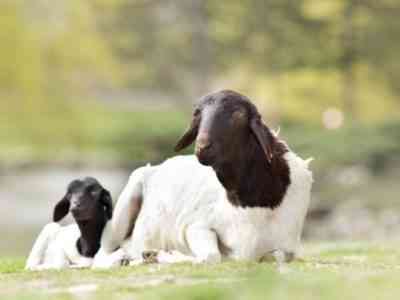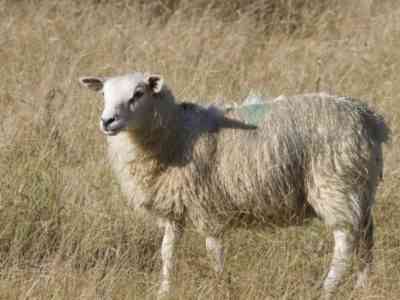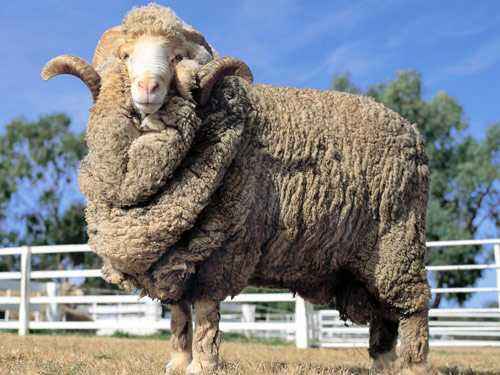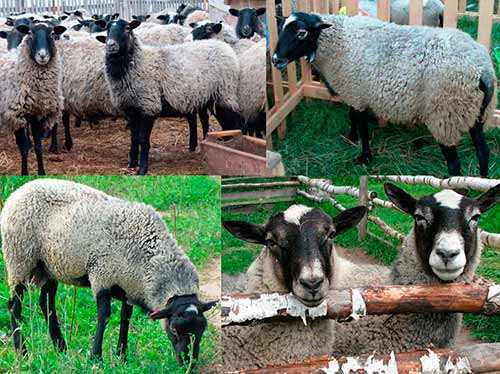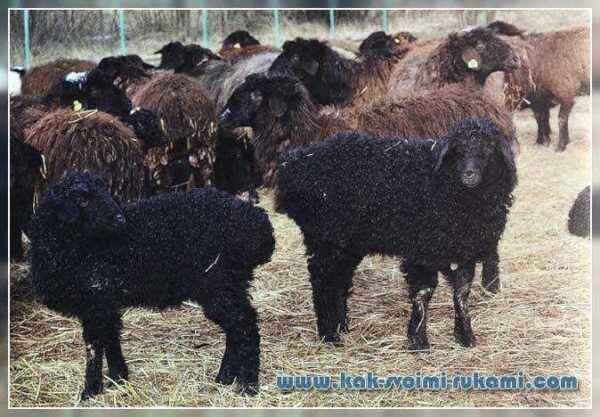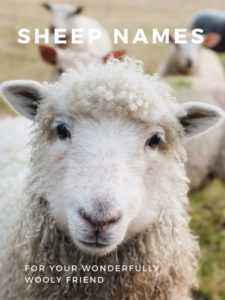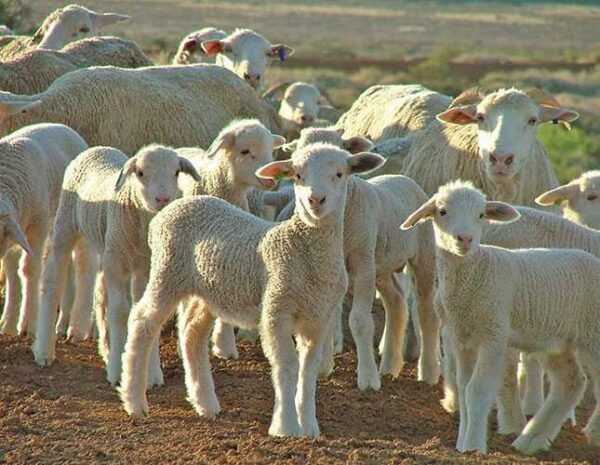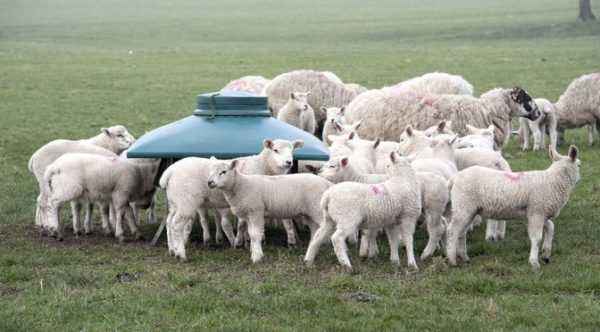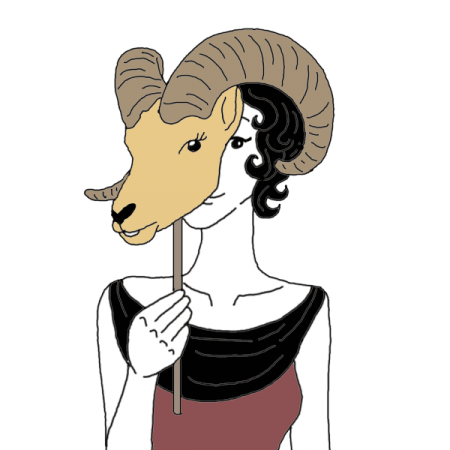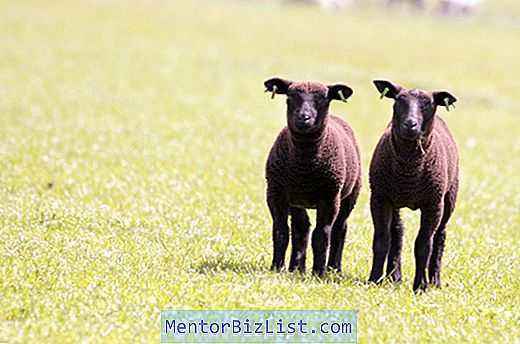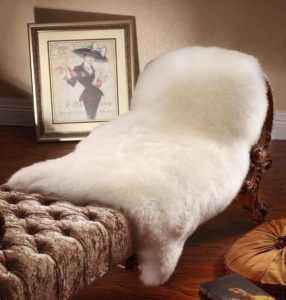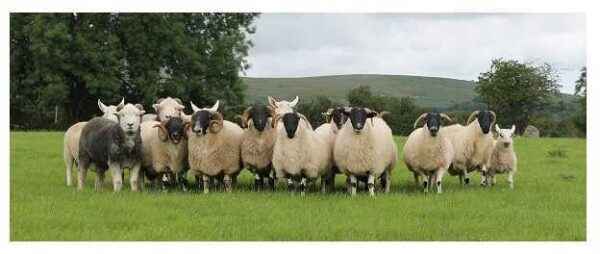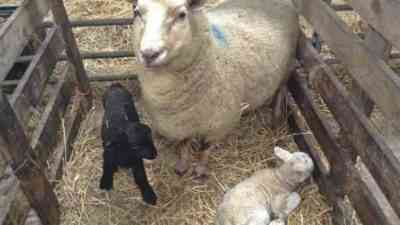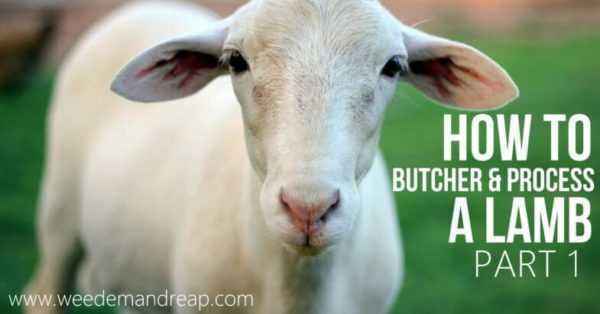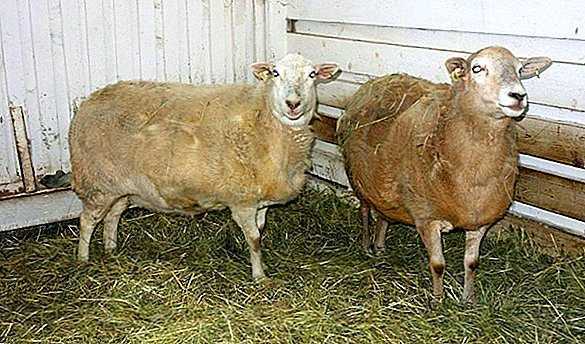Meat breeds of sheep and rams are characterized primarily by rapid weight gain and taste of meat. At a young age, lambs reach half the weight of an adult sheep. A one-year-old lamb weighs almost like an adult ram. Sheep meat breeds in Russia, Belarus and Ukraine are very popular, and many varieties do not require special conditions.
- Benefits of meat breeds
- Gissar and Edilbaevskaya breed
- Karachaevskaya breed
- Jaidar and Tajik sheep breed
- Romanovskaya and Kuibyshev breed
- Gorky breed
- West Siberian and North Caucasian breed
- Duper and Zwartbles breed
- Wiltshire horned and Barbados black-bellied sheep
- Buryat sheep and Tien Shan variety
- Soviet Merino and Romney march
- Conclusion
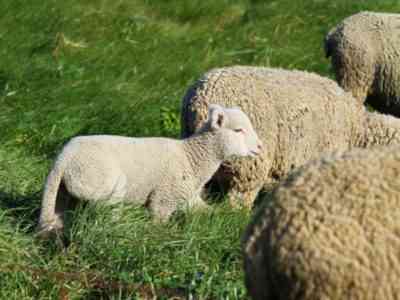
Species of sheep of meat breeds
Animals are able to find their own food and have enough fertility, and high-quality wool and tasty meat are valued both in domestic and foreign markets.The variety of meat breeds of sheep will allow farmers from any corner of Russia (from the southern regions to Siberia) to find a breed that meets the needs of the farm.
Most breeds of meat are characterized by a complaisant character, the ability to edvigatsya over long distances without significant damage to the weight and offspring. Before buying animals, you should familiarize yourself with the description in detail, see photos and videos of various breeds.
Benefits of meat breeds
- Endurance. The meat-and-wool variety can make large transitions in search of new pastures.
- Large and frequent offspring.
- Lack of requirements for special conditions of detention. Individuals intended for meat can safely graze on pastures all year round.
- Building adipose tissue both in winter and summer.
- Thin bones with a fairly strong physique.
- Large amount of high-quality meat.
- The ability to feed lambs plentifully, which provides them with quick weight gain and excellent health. Mortality among lambs is minimal.
Hissar and Edilbayev breed
Some sheep of meat breeds have a pronounced fat tail. These include representatives of the Hissar breed. The fat mass of an adult animal reaches 45 kg, while the weight of an average ram is about 140 kg, and that of a female is 80 kg. Sheep and sheep have good endurance, since in Central Asia, where they came from, they had to travel great distances in search of pasture. With intense physical activity, animals do not lose weight: the average daily gain is 600 g.
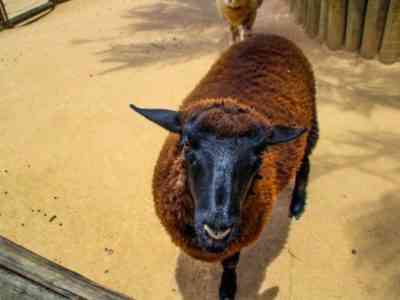
Hissar breed of sheep
Pasture search does not affect the nutritional value of female milk, which ensures stable weight gain in lambs. Hissar breed is not intended for wool.This breed is coarse, with a lot of dead hair. It should be noted that such a breed is common in Tajikistan and Uzbekistan.
Sheep of the Edilbayev breed is from Kazakhstan, which also indicates their endurance. In its homeland, such a variety is very popular. On average, sheep and sheep of this breed are slightly less than Gissar sheep: the male weighs 120 kg, and the female – 70 kg. Such meat breeds of sheep in Russia quickly get used to the local climate and easily adapt.
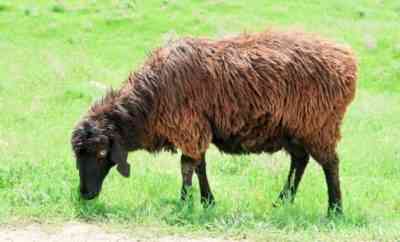
Edilbaevskaya breed of sheep
Karachaevskaya breed
Karachaevo individuals are the pride of Karachay-Cherkessia, according to local residents, this particular species is the focus of all the best qualities that only nature could give. The Karachaevsky variety can be used as meat-and-wool or lard-meat-dairy. Females give good milk yields. Caring for such a variety is simple.
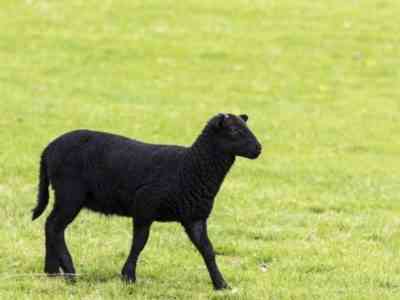
Karachaevskaya sheep breed
The Karachai specimen has a fat tail. The total weight of representatives of the meat sector is relatively small: sheep weigh 90 kg, females – 60 kg. Local meat farmers in Russia or Belarus are valued by local farmers for fat tail fat, which has high taste and no unpleasant aftertaste.Caring for animals is simple, such a breed is suitable even for inexperienced farmers.
Jaidara and Tajik sheep breed
The best fat tail species. The weight of fat in fat tail reaches 15 kg. The weight of the male is 110 kg, the weight of the female is 60 kg. Such individuals are not intended for the production of wool, since they have a little. Despite this minus, individuals have excellent milk, a large amount of meat, high-quality skins. Animals have strong immunity and excellent survival. They feed on Jaidar pasture and can travel long distances in search of food without harming the weight and health of the offspring.
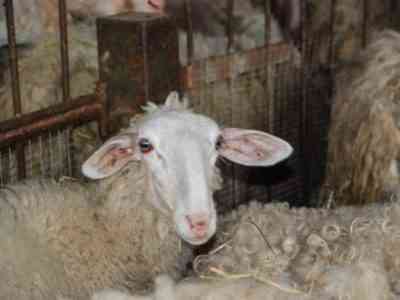
Jaidar sheep breed
There are relatively few tail-fat breeds, and they are mainly bred in Central Asia and the Caucasus. In the rest of the world, meat and wool species of animals are popular.
The Tajik variety combines a large amount of fat tail fat and good coat. Sheep are large and can weigh up to 160 kg, sheep – about 120 kg. Lambs at 4 months reach a weight of 45 kg. To date, such a species is practically not found on the territory of the Russian Federation, because the Tajik rams have passed the difficult path of selection, and its completion coincided with the collapse of the USSR, which did not contribute to distribution.

Tajik sheep breed
Romanovskaya and Kuybyshevskaya breed
Romanovs are the most famous representatives of Russian sheep breeding. Romanovskaya sheep earned popular love, thanks to unpretentiousness and endurance. This breed has no fat deposits. The Romanov specimen has a thick fur that prevents the hair from falling off. Good fur qualities of the Romanovsk sheep are known all over the world. 1.5 kg of wool is obtained from one Romanovsky individual, and 3 kg from a ram. Another advantage is the amazing fecundity: mating occurs regardless of the season.
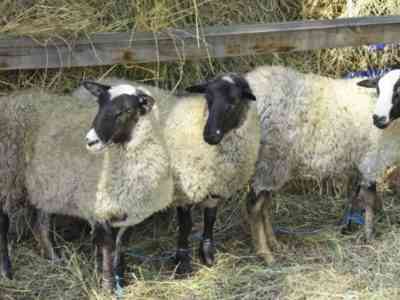
Romanovskaya breed of sheep
Kuibyshev breed is the best variety of Russian sheep breeding, which was bred in the late 40s. The Kuibyshev sheep combines the traditions of Soviet animal husbandry: it is hardy (it can successfully withstand the continental climate), it gives a large amount of high-quality meat, has a lot of wool.
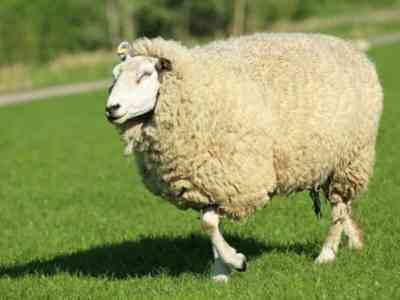
Kuibyshev sheep breed
The meat of the Kuibyshev sheep is marble, it does not have a lamb smell.Females have well-developed fertility and maternal instinct; almost every third female brings twins. The disadvantage is the inability to dry, poor food supply climate.
Gorky breed
The Gorky variety is the result of Anglo-Soviet selection. The individuals of this breed were obtained as a result of crossing the Hampshire variety with the Russian northern multiple individuals. As a result of selection, a Gorky sheep appeared, which has sufficient early maturity and economy (thanks to high-quality meat and wool, individuals quickly reimburse funds spent on food).
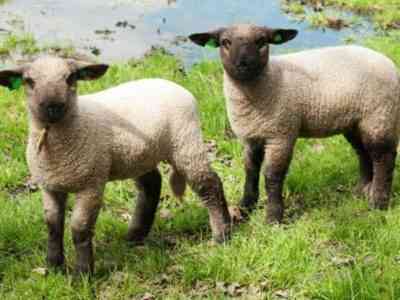
Gorky breed of sheep
Meat sheep of the Gorky variety give a good offspring: 130-160 lambs per 100 females. Unfortunately, the Gorky sheep cannot boast of a large amount of wool obtained, especially this negative quality is manifested by non-tribal representatives.
After the collapse of the USSR, the breed practically disappeared, and is currently being restored, thanks to the efforts of individual enthusiasts.
The West Siberian and North Caucasian breed
The West Siberian variety is the youngest of the common meat breeds. In the final version, it was introduced only in 2010.The West Siberian breed was specially selected for breeding in the conditions of the Siberian winter. A good result was achieved in terms of weight: rams reached 100 kg, females – 63 kg. The wool of the West Siberian variety is semi-fine.
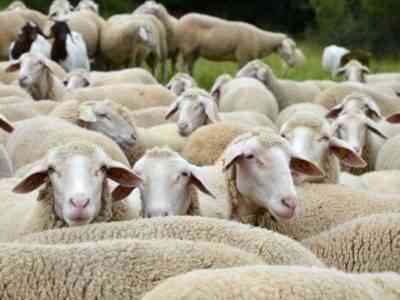
West Siberian sheep
The North Caucasian sheep was obtained as a result of breeding of the Romney March and Lincoln breeds. This species is characterized by fairly large males (120 kg) and small females (65 kg). Lambs show high growth: at 4 months, the average weight reaches 33 kg. The North Caucasian variety is not uncommon for our country, and many beginning farmers breed this breed.
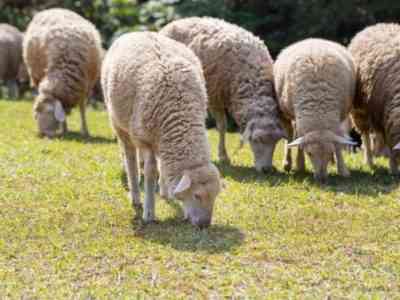
North Caucasian sheep
Breed Duper and Zwartbles
Sheep meat species are distinguished by a high amount of quality meat, short hair, fertility and endurance. Meat breeds are mainly distributed in the West and in Africa, in a hot climate that does not allow enough wool to grow. Almost pure meat breeds include Duper. Many farmers believe that this is the best meat breed.
Its representatives do not have wool, but this drawback is fully compensated by the presence of tasty, lean meat that does not have unpleasant odors and aftertaste.
Duper breed
The southern region of Russia has a hot climate, so it becomes problematic to grow other individuals there. Sheep can weigh 140 kg, females – 95 kg, lambs gain weight quite quickly, and by 4 months they weigh 65 kg. Of the similar breeds, one can note a variety such as the Kutum sheep. It is considered meaty and smooth-haired, which allows it to be grown in hot climates.
High taste qualities are characteristic of the Zwartbles breed. These Dutch people have thick coat and stamina. Females and males on average do not differ very much in weight. Males weigh 130 kg and females weigh 100 kg. Females are quite prolific, and it is not difficult to breed them.
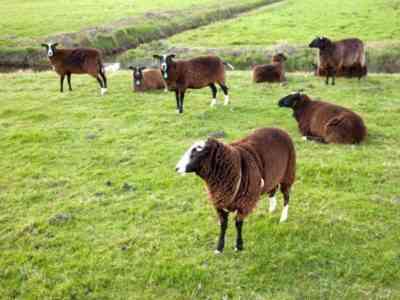
Sheep breed Zwartbles
Wiltshire horned and Barbados black-bellied sheep
Wiltshire horned is not the most famous variety in Russia, but this British breed has impressive dimensions. The characteristic of animals is such that, regardless of gender, both small sheep and sheep grow horns. Compared with others, this species is not characterized by good fertility. Animals weigh up to 140 kg males, females a little less – 90 kg.
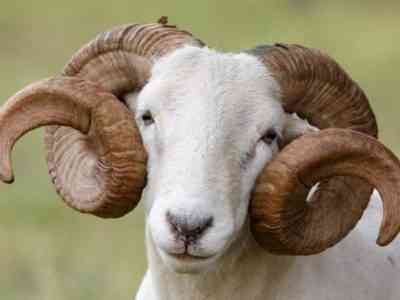
Wiltshire horned
Barbados black-bellied sheep – This is a relatively small individual in the meat direction (males reach 90 kg, females – 60 kg). The undoubted advantage of sheep and rams is diet meat without lanolin. The fertility of the breed is quite high.

Barbados black-bellied sheep
Buryat sheep and the Tien Shan variety
Everyone who needs a “frost-resistant” variety of meat direction should pay attention to Buubei (Buryat sheep): it is difficult to find it better in this regard. Such individuals were brought out by Buryat tribes taking into account the harsh climate and limited food supply. Buubei are able to eat pasture throughout the year, while showing good productive indicators. The character is mobile, females are distinguished by a developed maternal instinct. The weight of the male is 100 kg, the female is 60 kg.
The Buryat ram has thick wool, which allows this species to be attributed to fur coat. The meat has no characteristic odor and tastes good.
Buryat sheep
Tien Shan variety is more suitable for those who live in mountainous areas with a harsh climate. This is the best meat breed of sheep and rams, according to many farmers. The breed is distinguished by excellent precocity and strong immunity for posterity. Unfortunately, the hairline of sheep and rams is rare, and it is not enough to make a large amount of tissue. Sheep also has a small kurdyuk.
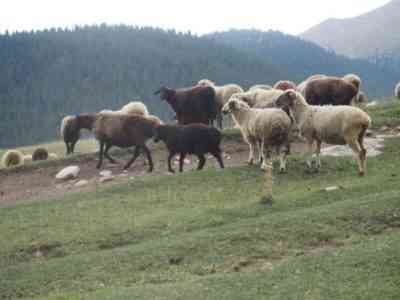
Tien Shan sheep species
Soviet Merino and Romney March
Soviet Merino is one of the most popular varieties in the Republic of Dagestan. Soviet merinos have two subspecies: meat-wool and purely wool. The individuals are distinguished by high quality long wool and good meat performance.
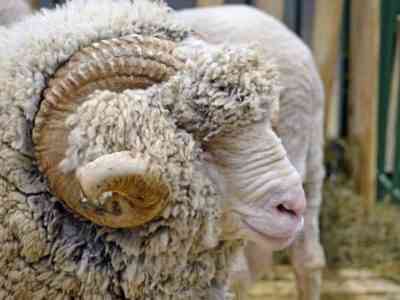
Soviet Merino
The average weight of a sheep is about 110 kg, for a female – 50 kg. Tribal animals have a white color, the amount of wool can reach 30 kg per sheep. Unfortunately, the wool of this breed is prone to pollution, the formation of mats, prone to the appearance of parasites.
The character of the individuals is calm, they are prone to a herd lifestyle, are unpretentious and eat both pasture and compound feeds. Animals are not recommended to be kept in pens, as long exposure under the roof can provoke the appearance of parasites.
Romney-march is an English variety of sheep and sheep that has a muscular physique and strong legs. In Russia, a pure Romney march is not widespread, since it turned out that the nutrition for young animals in our country is insufficient, so the breeders specially improved this variety with the help of various crosses.
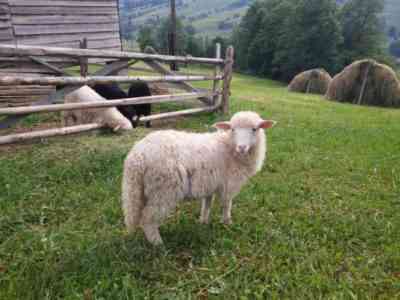
Breed Romney-march
Unfortunately, the quality of the finished product was affected during the selection process, so the breed had to be diluted again, so that in the end we get the Russian Romney March. Breeds of sheep of the meat Romney Marsh direction give a sufficient amount of milk, so the lambs gain good weight and have strong immunity.
Conclusion
Ultimately, there are many meat breeds for any taste. The main thing is to decide on the goals: it is important to get only one meat or the quality of the wool also has value. Or maybe, for the owner of the lamb, the amount of milk that the lamb is capable of giving, or the frost resistance of individuals, is of great importance. Given these and other requirements, it is advisable to choose the best option.
